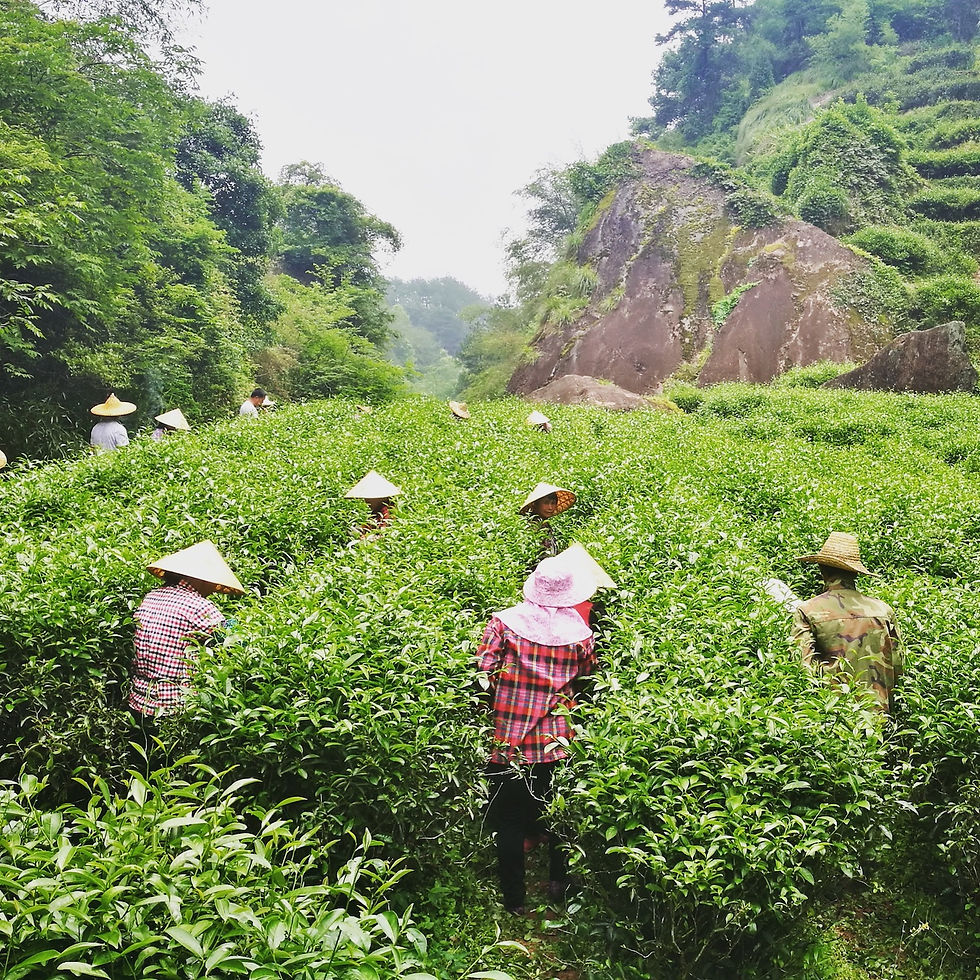Blog 86: The Real Difference Between Spring and Winter Harvest
- Valley Brook Tea

- Jan 14, 2019
- 4 min read
Updated: Jan 18, 2019
As we all know, the price of a product is determined by the balance of supply and demand. Given a fixed demand, more the supply, lower the price.
This basic rule of economics also applies to tea production. However, unlike modern industrial products, tea cannot be produced at an infinite amount.

Each tea plant must take a certain amount of land. Because all premium teas are area-focused (e.g. Wuyi oolong is from Wuyi area in Fujian, west lake green tea is from West Lake area in Hangzhou, Zhejiang, Xinyang MaoJian green tea is from Xinyang, Henan), there is always a cap on how much land can be used for tea production.
Here comes an interesting question: what if we just boost the output per tea plant?
Indeed, if we can find a way to make a tea plant produce more leaves, the tea-leaf output per acre would also increase. And YES, it’s perfectly possible.
In tea-making, this would be done through multiple harvests per year. The most common practice is to add a winter harvest in addition to the spring harvest. (Some low-quality tea producers would even harvest all year around. We’ll not discuss this type of teas here.)
Unfortunately, the quality of tea deteriorates with the increase in the number of harvests. In a previous tea blog, we explained how tea plants acquire essences from the surrounding environment in all four seasons. (Please see Blog 64 for details.) In this blog, we’ll go into the specific differences between spring harvests and winter harvests, and why spring harvests are superior.

Spring harvest refers to the harvest between mid/late April to mid May, and winter harvest is the harvest in mid/late October.
To any tea producer, spring harvest is always the priority. If a tea field is harvested once a year, it must be a spring harvest. There is no tea producer who gives up a spring harvest for a winter harvest. Therefore, if a tea is from the winter harvest, it means that the same tea plant must have had a spring harvest already.
Normally, one harvest per year allows tea plants to regrow for an entire year. If a winter harvest is added to the calendar, tea plants only have 6 months to regrow till the next harvest.
If tea plants are harvested more than once a year, the impact on the taste of tea is direct. Teas from spring harvests can last at least 8 infusions. Tea products from the winter harvest have a much lower endurance. The tastes usually “flatline” after 4 to 5 infusions.

Different levels of sunlights play a critical role. The spring sun is gentle, and it can inhibit tea plant’s carbon metabolism and reinforce its nitrogen metabolism. The mild spring sun allows tea plants to accumulate more amino acids and prevent the generation of polyphenols. The result of low amino acids to polyphenols ratio means a more tasty tea soup.
Obviously, the winter sun is a lot weaker than the spring sun. During this time, tea plant grows at a slower rate. Full of polyphenols, fresh leaves are tenderer. This is why winter harvest teas taste drier and bitterer.
Because winter harvests overwork tea plants and force them to skip the influence of a full season’s surrounding plants (see Blog 64 for details), fresh leaves from the winter harvest are low on nutrient essences. Leaves from the winter harvest and the following spring harvest are commonly smaller and more delicate.
As we know, tea-making involves some difficult or even brutal processes. Leaves from the winter harvest are usually too weak to take on the full tea-making steps.
For example, in Wuyi oolong tea-making, tea leaves must go through a roasting step (Please see the list of all "Wuyi oolong roasting" related blogs for details). Winter harvests, however, can only endure light roasts. If winter harvests are roasted too much, they’d taste even lighter.

Without the full scale of tea-making, a tea is not complete. The imperfection of winter harvests are inherent problems from the beginning.
Without a doubt, tea producers who perform winter harvests trade quality for quantity. Although it’s not our business to judge (because we’re also a tea producer), it’s quite important for tea lovers to understand that there are quality differences between a spring harvest and a winter harvest.
We hope you enjoyed today’s blog. As always, if you have questions or suggestions, please leave a comment, tweet us @valleybrooktea or email the author directly at zhang@valleybrooktea.com. Please also follow us on Instagram @valleybrooktea and join our mail list to get our daily tea updates and our latest promotions!
Wuyi oolong roasting related blogs:




Comments